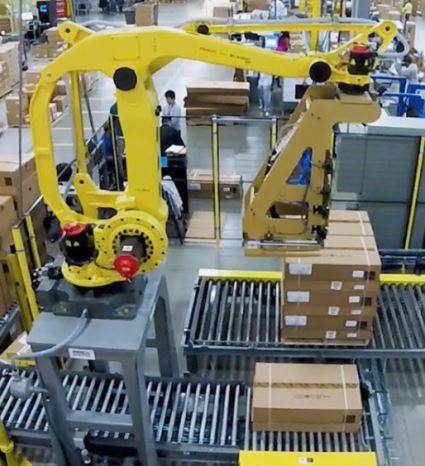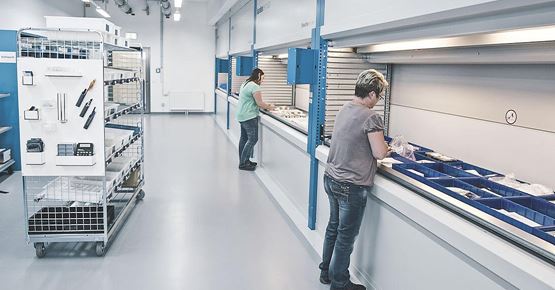In the world of distribution where facilities store and distribute all the necessities we require, the supply chain hub is critical to their operation. Too often we take it for granted that items just happen to be on the shelf at a store, rarely thinking about how it got there. There are the manufacturers of the product itself and the transportation of product, and without them we have nothing to distribute. But the distribution is the hub that makes everything happen in an efficient, cost effective manner.
Managing distribution is a complex process that takes a lot of manpower and logistical planning. Now, picture the distribution process when people can’t go to work, or many of your people are restricted from working, like we’re facing now with the COVID-19 pandemic. While many can only imagine what happens, we know firsthand. Things stop moving altogether or they move at such a slow pace that the supply chain doesn’t keep up with demand. We now see how much we rely on people to get the work done, but should there be a better balance between people and equipment? I think so now that we’ve seen what a pandemic or other disruptions can do to a workforce?
A collaborative effort
Automation may be the solution to this problem. The balance between people and  machines is critical to assure the process is maintained. Does this mean we need less labor? Not at all. We can utilize people at a higher level and let equipment do the physical work — a robot could pick product from a location and put it on a conveyor that would transport it to a packing location. At that point, an auto bagger could package the item, put a label on it, and send it to the shipping area where it gets automatically loaded onto a truck.
machines is critical to assure the process is maintained. Does this mean we need less labor? Not at all. We can utilize people at a higher level and let equipment do the physical work — a robot could pick product from a location and put it on a conveyor that would transport it to a packing location. At that point, an auto bagger could package the item, put a label on it, and send it to the shipping area where it gets automatically loaded onto a truck.
Wow, we just eliminated all the people! But did we really? Someone had to program these operations, build this equipment, maintain it, and monitor the process. People simply work at a higher level, with more valuable skills and the accompanying higher rate of pay. Automation doesn’t have to result in a reduction in human labor; instead, it should reallocate people to do what we do best. Let the machines handle the repetitive drudgery.
Staying ahead of the curve
I have outlined a few pieces of equipment that have proven to be very effective during the current pandemic.
- Fanuc Robotics – An extension of your arm that can basically do repetitive tasks faster and more efficiently or work collaboratively with you. A robot can be used everywhere for end of process pallet loading, beginning of process pallet unloading, or part of an in-line process.
- Kardex Remstar – Technology that allows you to automate your storage and
 retrieval or in-process needs while using all the available height within a facility. This includes multi-level access, dual same-level access for clean room applications, inventory management and tracking.
retrieval or in-process needs while using all the available height within a facility. This includes multi-level access, dual same-level access for clean room applications, inventory management and tracking. - Hytrol Conveyors – Transports your product allowing you to focus on your task at hand. Used throughout the industry in hundreds of applications, conveyors are one of the most universal pieces of equipment in the distribution and manufacturing process.
- Raymond Lift Trucks – The leader in the forklift industry will soon release an automated un-manned line of equipment. Is a lights-out warehouse attractive to you?
- Perfect Pick or Autostore – Technology that brings merchandise to you efficiently and at very high rates, allowing you to be more productive with reduced labor and turn around orders in hours rather than days.
These are just a few items available and there are many more for all sorts of applications. Are you ready to review yours? I’m sure we can automate with a great ROI that allows for future growth and sustainability. Call Abel Womack today, and we can walk through your needs to determine if any of our automated products or services are a fit for your business needs.

 retrieval or in-process needs while using all the available height within a facility. This includes multi-level access, dual same-level access for clean room applications, inventory management and tracking.
retrieval or in-process needs while using all the available height within a facility. This includes multi-level access, dual same-level access for clean room applications, inventory management and tracking.

Excellent quick read and to the point. Automation will never wane as our Industrial Nation must always embrace new and growing technologies.
Abel Womack has been designing and supplying these types of Automation for 100 years and counting.
Thanks for the article Rick Dionne!